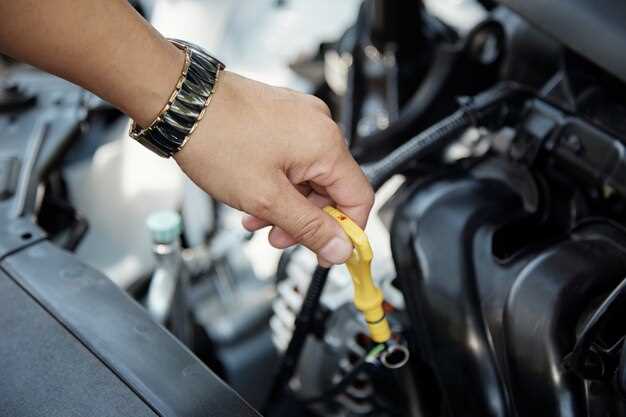
Changing the oil in your truck is a crucial maintenance task that helps ensure its longevity and performance. By performing this operation yourself, you can save money and gain a better understanding of your vehicle. Regular oil changes contribute to the overall health of your engine, improving efficiency and reducing wear over time.
This guide provides a detailed step-by-step approach to changing your truck oil at home. Whether you are a seasoned mechanic or a novice enthusiast, the following instructions will help you navigate the process with confidence. Having the right tools and materials ready will make the task smoother and more efficient.
In this article, we will cover everything from gathering necessary equipment and supplies to disposing of your used oil responsibly. By the end of this guide, you will have the knowledge to maintain your truck’s engine oil like a pro. Ready to get started? Let’s dive in!
Gathering the Necessary Tools and Supplies for an Oil Change
Before you begin the oil change process, it is essential to gather all the necessary tools and supplies to ensure a smooth and efficient experience. Start by collecting the following items:
1. Oil Filter Wrench: This tool helps to easily remove the old oil filter. Choose a wrench type that fits the size of your filter for better leverage.
2. Oil Catch Pan: A container is required to catch the old oil as it drains from your truck. Make sure it is large enough to hold the entire oil capacity of your engine.
3. Socket Wrench Set: A set of socket wrenches is necessary for removing the drain plug from the oil pan. Ensure you have the correct size socket, typically between 12mm to 15mm, depending on your truck model.
4. Funnel: A funnel will help you pour new oil into the engine without spilling. Choose a funnel with a wide mouth for easier handling.
5. New Oil: Select the right type and viscosity of oil recommended by your vehicle’s manufacturer. Consider using high-quality synthetic oil for better engine performance.
6. New Oil Filter: Always replace your oil filter during an oil change. Check the owner’s manual for the correct filter type compatible with your truck.
7. Rags or Paper Towels: These will be useful for cleaning up spills and wiping your hands during the process. Keep them handy to maintain a tidy workspace.
8. Safety Gear: Wear gloves and safety glasses to protect yourself from oil splashes and harsh chemicals while working.
Once you have gathered all these tools and supplies, you will be adequately prepared to perform a successful oil change at home.
Step-by-Step Guide to Draining Old Oil and Replacing the Oil Filter

Changing the oil filter and draining old oil are crucial steps in maintaining the health of your truck’s engine. Follow this guide to complete the process effectively.
Step 1: Gather Materials
Before starting, collect the following supplies: an oil catch pan, a socket wrench set, an oil filter wrench, new oil, a new oil filter, rags, and gloves.
Step 2: Prepare Your Truck
Park your truck on a level surface and engage the parking brake. If your truck has been running, allow the engine to cool for at least 30 minutes to avoid burns.
Step 3: Locate the Oil Drain Plug
Identify the oil drain plug under your truck. It is typically located on the oil pan at the bottom of the engine. Refer to the owner’s manual if you’re uncertain.
Step 4: Drain the Old Oil
Position the oil catch pan beneath the drain plug. Use the socket wrench to carefully remove the plug, allowing the old oil to flow into the pan. Be cautious as the oil may still be warm.
Step 5: Remove the Oil Filter
Using the oil filter wrench, turn the old oil filter counterclockwise to remove it. Note that some oil may spill out during this process, so ensure the catch pan is in place. After removing, check for any old filter gasket stuck to the engine.
Step 6: Prepare the New Oil Filter
Before installing the new oil filter, apply a small amount of new oil to the rubber gasket on the top of the filter. This helps ensure a good seal and makes removal easier for future changes.
Step 7: Install the New Oil Filter
Screw the new oil filter onto the engine by hand. Tighten it gently until secure, but avoid over-tightening which can cause damage.
Step 8: Reinstall the Drain Plug
Once the oil has fully drained, replace the drain plug and tighten it securely with the socket wrench. Ensure there are no leaks before proceeding.
Step 9: Add New Oil
Open the hood and find the oil filler cap, usually located on the top of the engine. Remove the cap and use a funnel to pour in the new oil, following the specifications in your owner’s manual for the correct type and amount.
Step 10: Check Oil Level
After adding oil, allow a few minutes for it to settle. Use the dipstick to check the oil level, adding more oil if necessary until it reaches the recommended mark.
Step 11: Run the Engine
Start the truck and let it idle for a few minutes. This allows the new oil to circulate. Check for leaks around the oil filter and drain plug.
Step 12: Dispose of Old Oil and Filter
Properly dispose of the old oil and filter at a recycling center or an auto parts store that offers disposal services. Never pour oil down the drain or onto the ground.
Following these steps will help you drain your old oil and replace the oil filter correctly, ensuring your truck operates smoothly and efficiently.
How to Properly Fill New Oil and Check for Leaks

After draining the old oil and replacing the oil filter, you are ready to fill your truck with new oil. Start by selecting the correct type and viscosity of oil according to your vehicle’s specifications found in the owner’s manual.
Begin by placing a funnel in the oil fill opening, which is usually located on the top of the engine. This will help prevent spills and make the pouring process smoother. Carefully pour the new oil into the funnel, monitoring the amount to avoid overfilling. Most trucks require between 4 to 8 quarts, so consult your manual for the exact volume needed.
Periodically check the oil level using the dipstick. Remove the dipstick, wipe it clean, reinsert it fully, and then pull it out again to check the level. The oil should be within the designated range marked on the dipstick. Add oil in increments if necessary, ensuring you do not exceed the recommended level.
Once the oil is added, start the engine and let it run for a few minutes. This allows the new oil to circulate throughout the engine and the oil filter. After shutting off the engine, wait a couple of minutes, then check the oil level again using the dipstick to ensure it is still within the appropriate range.
Next, it is crucial to check for potential leaks. Inspect the oil filter and the oil drain plug for any signs of leaking oil. Look under the truck for any puddles or drips. If you notice any leaks, turn off the engine and tighten the oil filter and drain plug as necessary. If leaks persist, consider consulting a professional.
Finally, dispose of the old oil and oil filter properly at a recycling center or an auto parts store that accepts used oil. Keeping your oil change area clean and free of debris will help maintain a safe and efficient working environment.



